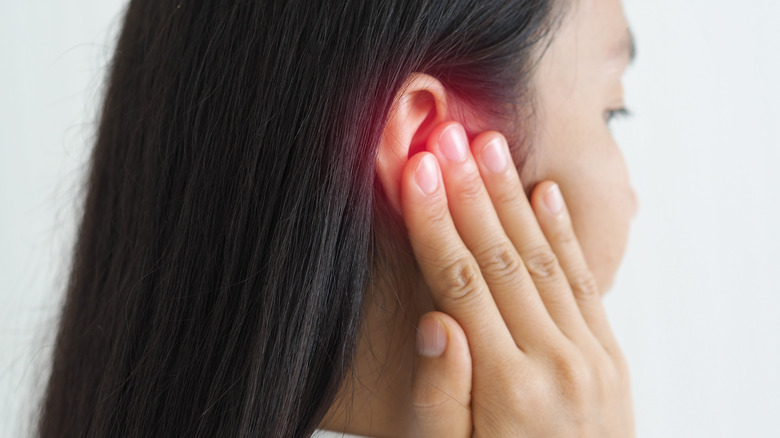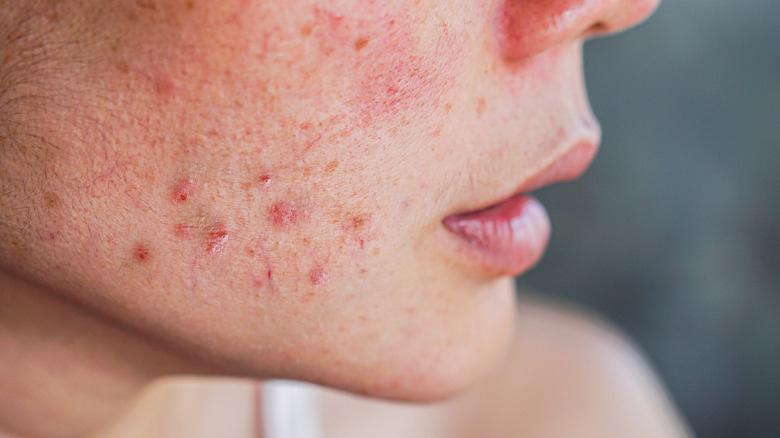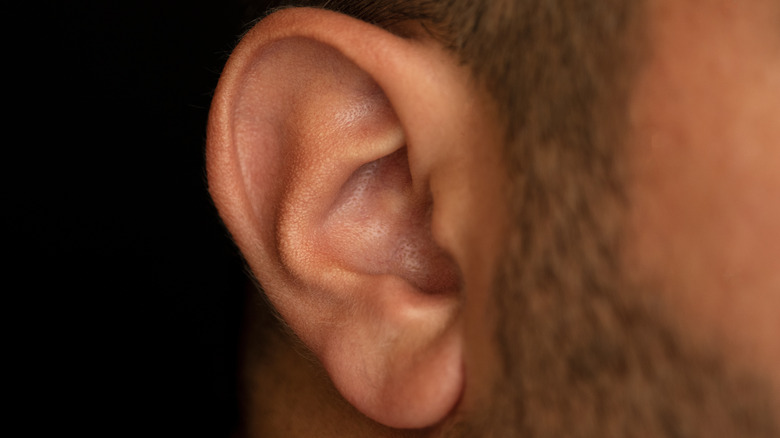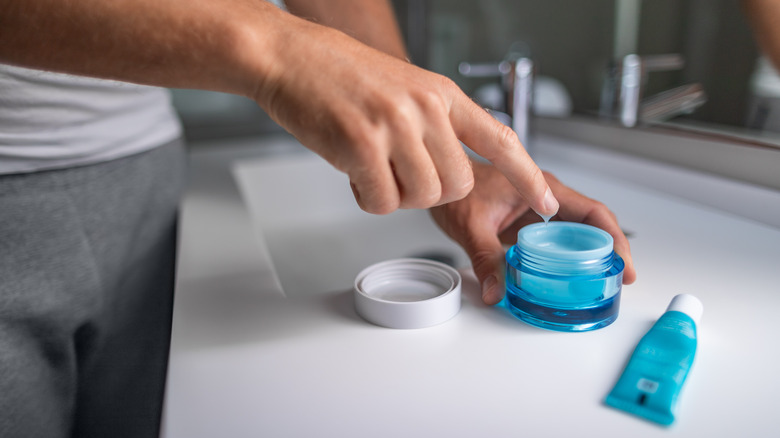What It Really Means When You Get A Pimple In Your Ear
Even though people are more prone to experiencing acne during their teenage years, it's not uncommon to experience it throughout different stages of life, according to the American Academy of Dermatology Association (AAD). In fact, about 85% of people who experience acne are between the ages of 12-24 and the skin condition can continue into your 30s and 40s.
Acne can appear anywhere: your face, your back, and even your ears. Though different types of acne can bring on different levels of pain, even the tiniest of bumps can prove to be intolerable — especially when it's a pimple in your ear. Understanding what type of acne is in your ear, what causes it, and how to get rid of it can be helpful for creating a self-care routine that prevents it from coming back. Here is what you need to know about pimples that develop in the ear and why they emerge.
Symptoms of acne
The Mayo Clinic defines acne as hair follicles that are clogged with oil and dead skin cells. When this happens, you may experience symptoms of acne, such as whiteheads, blackheads, or pimples. More severe symptoms include nodules and cystic lesions. Typically, you can tell which symptom is ailing you by its appearance and the level of pain it's causing.
Whiteheads are closed plugged pores while blackheads are open plugged pores. Rarely is pain associated with whiteheads or blackheads. Pimples refer to small, red bumps that are tender to the touch and may have white pus-filled tips. Nodules are painful large, hard bumps under the skin. Cystic lesions are similar to nodules, only they're filled with pus and tend to be the most painful.
The AAD recommends skincare habits such as washing twice a day, using a non-abrasive cleanser, and opting for gentle alcohol-free products to help alleviate acne. If nothing seems to help or if your acne is getting worse, it's a good idea to consult with a dermatologist. When it comes to acne in the ear, you're most likely dealing with whiteheads, blackheads, or pimples.
What causes pimples in the ear
If you've ever rolled your eyes when your mom yelled, "Don't forget to wash behind your ears!" having a pimple in your ear will definitely make you wish you had listened.
Per Healthline, pimples in the ear are generally the result of the ear gland overproducing oil. Pimples can also appear when there's an excessive build-up of bacteria and dead skin cells in the pores. This can be triggered by anything from constantly digging in your ears to stress and hormonal imbalance.
As MedicalNewsToday simply put it, "anything that introduces bacteria or dirt into the ear can cause pimples." This is especially true if you wear headphones or earbuds often. Sharing earbuds or not keeping your headphones clean can cause pimples to form in your ear. Other causes include infected ear piercings, allergic reactions to hair or beauty products that come in contact with the ear, putting items in your ears, wearing hats for an extended period of time, and swimmer's ear.
How to get rid of a pimple in your ear
First and foremost, whatever you do, don't pop it. Popping a pimple can push bacteria, dirt, and oil deeper into the follicle and that will only make matters worse — even if you think you got it all out.
According to Verywell Health, the best thing to do is just to let it work itself out. Avoid using tools to get rid of it, as that can be just as dangerous (if not more) as popping it. If you just can't seem to leave it alone, try using a warm compress, retinoid cream, benzoyl peroxide, a topical antibiotic, or tea tree oil to help the pimple go away.
If none of these suggestions help or if the pimple gets worse, Prevention notes that a dermatologist can help by prescribing medication or using measures such as a cortisone injection, extraction, or a pen punch to alleviate the issue.




